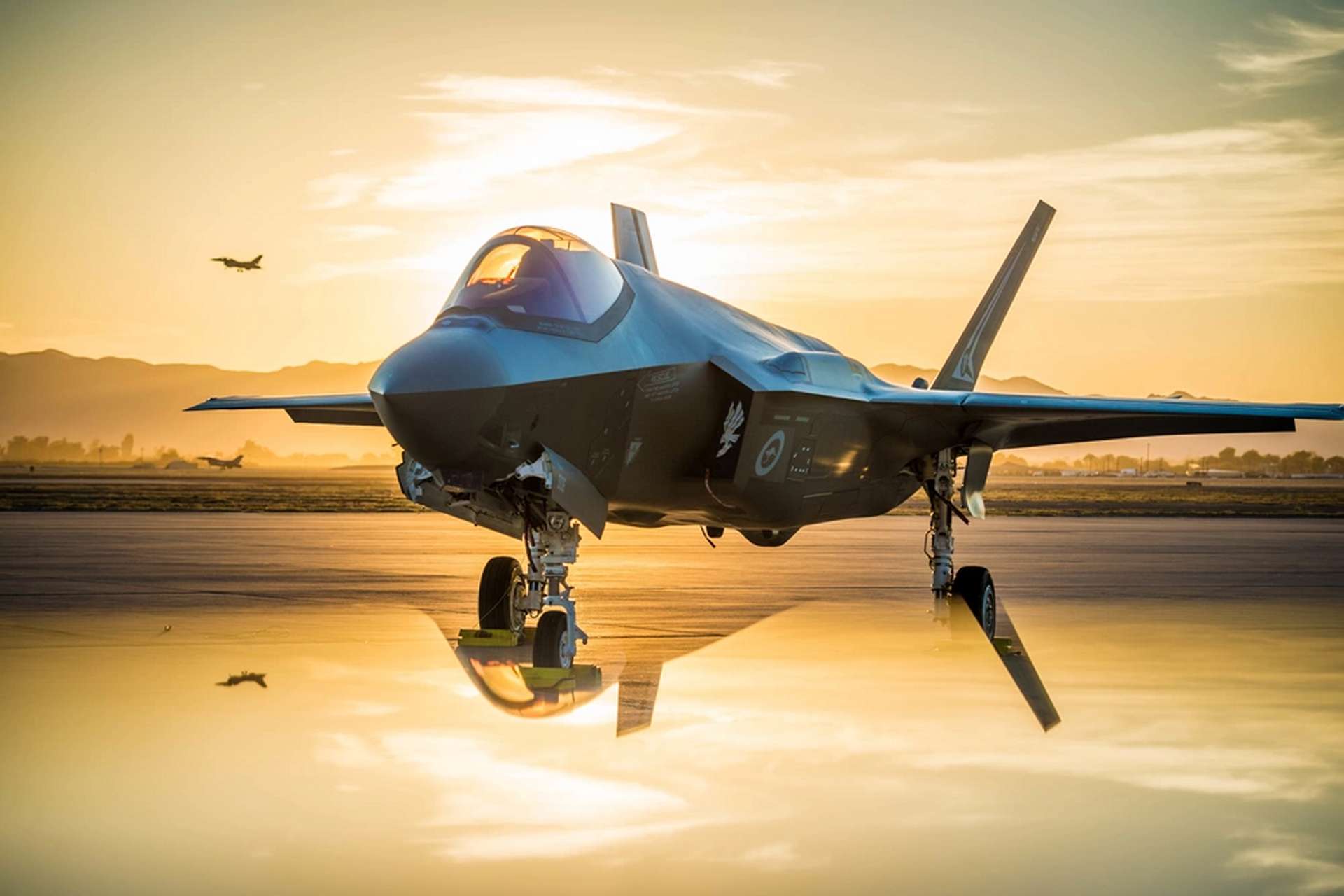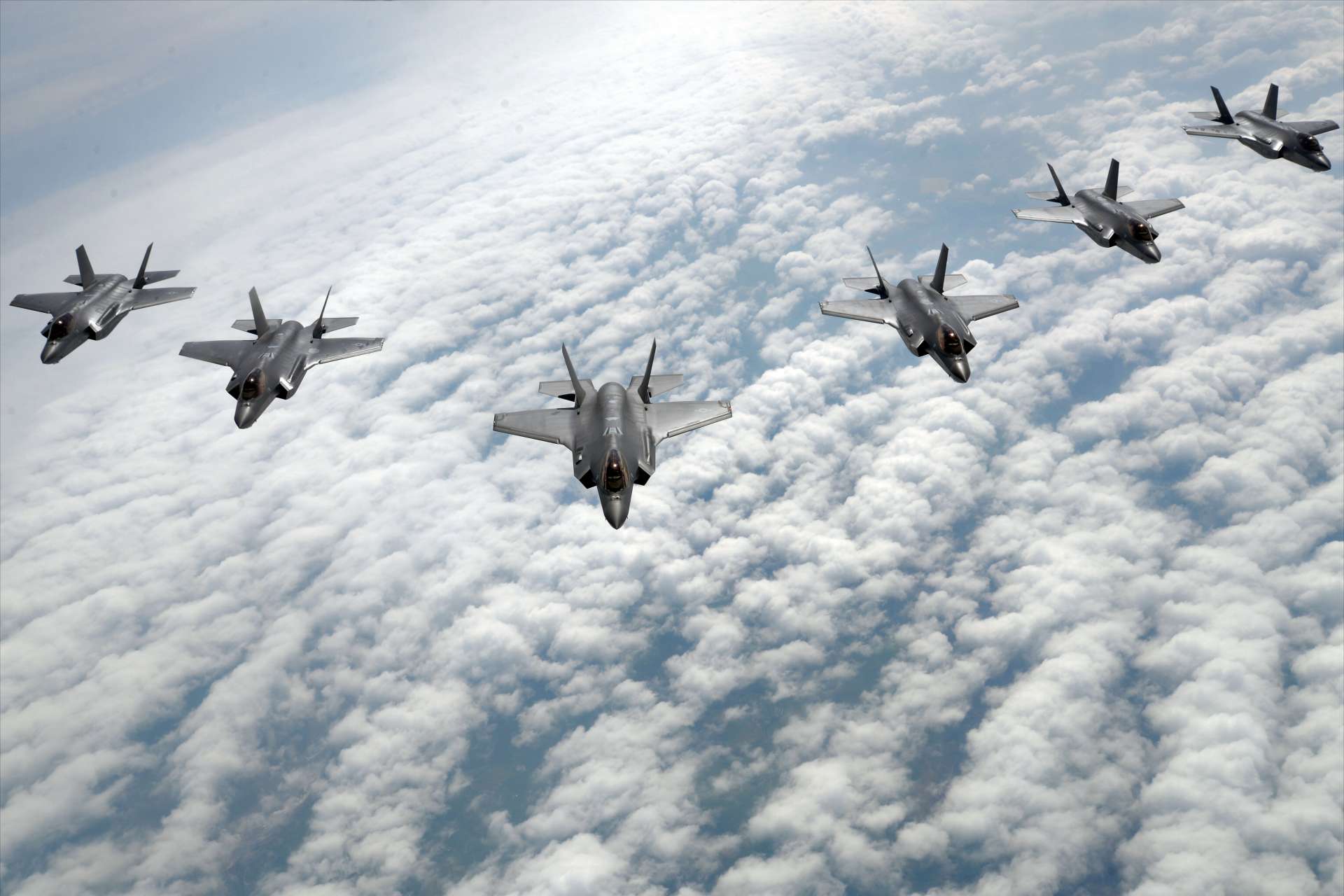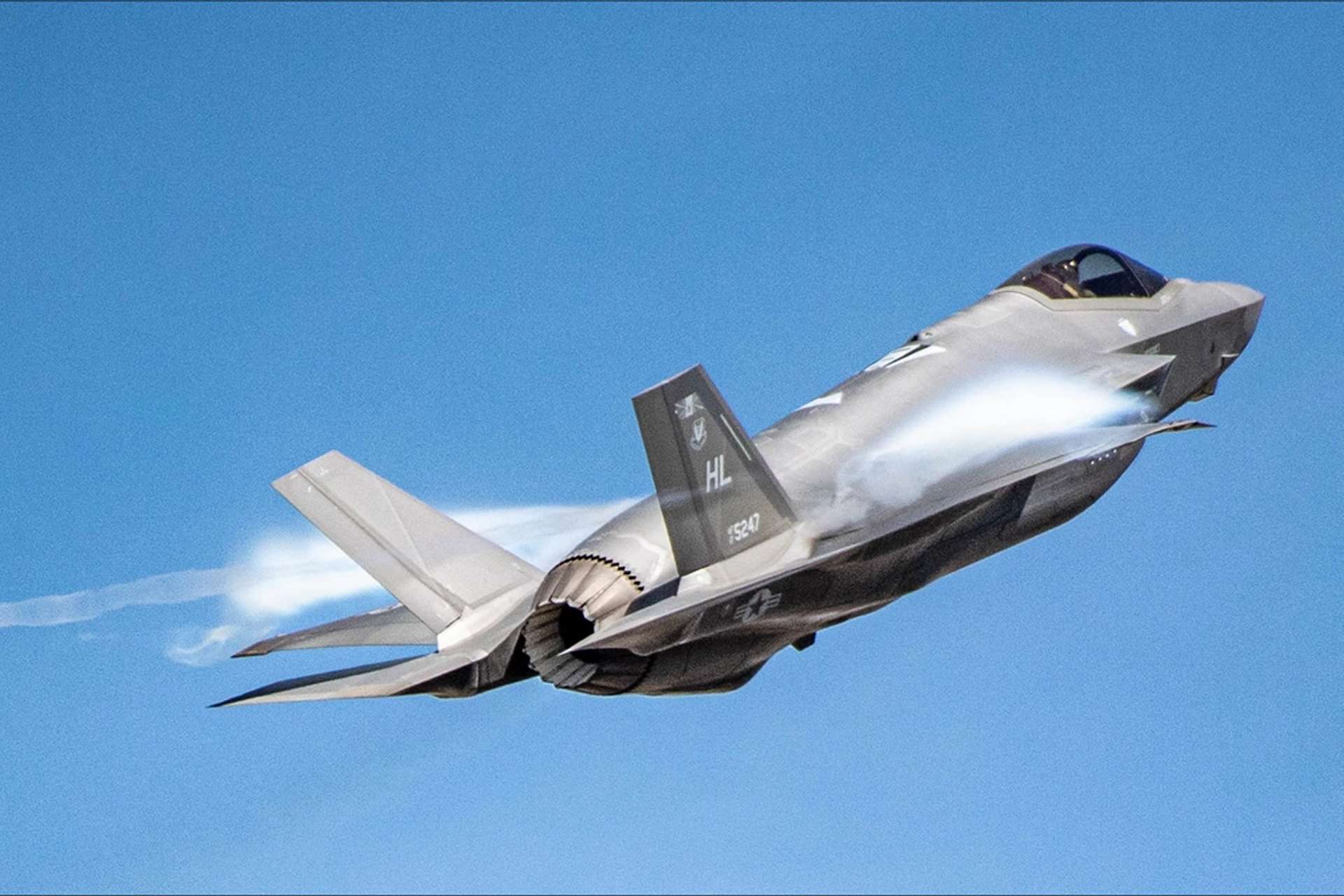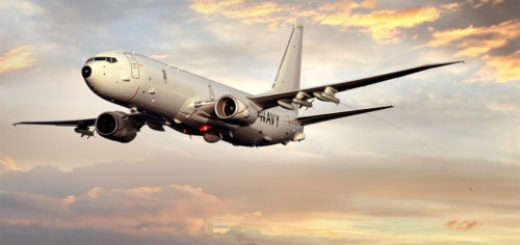United States Approves Sale of 32 F-35 Fighters to Romania for $7.2 Billion

{loadposition bannertop}
{loadposition sidebarpub}
The U.S. State Department has approved the sale of 32 F-35A fighter jets to Romania, a deal valued at $7.2 billion. This transaction, which also includes F135 engines manufactured by Pratt & Whitney, as well as related equipment and services, still requires approval from the U.S. Congress.Follow Army Recognition on Google News at this link
The F-35 Lightning II is a multirole fighter aircraft, designed by Lockheed Martin. (Picture source: US DoD)
The acquisition of these aircraft will enable Romania, a key NATO member, to enhance its capability to address current and future threats. It will also improve its ability to conduct regional defense and security missions while optimizing interoperability with the United States and other NATO members. Romania aims to become one of the largest F-35 operators on NATO’s eastern flank, alongside Poland and the Czech Republic, amid ongoing concerns related to Russian aggression in Ukraine.
In addition to the 32 fighter jets, the transaction includes a spare engine, secure communication equipment, precision navigation systems, cryptographic and identification devices, flight simulators, weapons and ammunition, as well as spare parts and maintenance services. The services offered also include the training of Romanian personnel, the delivery and integration of electronic warfare software, as well as logistical and technical support. The aircraft will be primarily manufactured at Lockheed Martin’s facilities in Fort Worth, Texas.
Romania plans to receive its first F-35s in 2030. The country is also considering acquiring 16 additional aircraft to form a third squadron. Ultimately, this acquisition could make Romania the largest F-35 operator on NATO’s eastern flank, thereby strengthening its strategic position amid regional tensions.
This deal is part of the ongoing military cooperation between Romania and the United States. At the same time, Ukrainian pilots have begun their training in Romania on F-16 fighters, as part of Ukraine’s efforts to repel the Russian invasion. Romania also inaugurated an F-16 training center at its Fetesti Air Base in November 2023, committing to train Ukrainian pilots at this facility.
The approval of this sale is a strong signal of the U.S. commitment to its NATO allies, particularly in light of the situation in Ukraine. The presence of F-35s in Romania aims to enhance political and economic stability in the region. This sale is not expected to upset the military balance in the region but, rather, to improve NATO’s defense capability in the face of current challenges.
The U.S. State Department has approved the sale of 32 F-35A fighter jets to Romania. (Picture source: US DoD)
The F-35 Lightning II, designed by Lockheed Martin, is a next-generation multirole fighter aircraft. Designed to meet the needs of the armed forces, it is intended for a variety of missions, ranging from air superiority to ground attack, as well as intelligence, surveillance, and reconnaissance. This aircraft comes in three versions, adapted to different branches of the armed forces: the F-35A for the Air Force, the F-35B for short takeoff and vertical landing for the Marines, and the F-35C for carrier operations for the Navy.
The F-35 made its first flight in 2008 (F-35B version) and was put into service in 2015 for the F-35A, 2016 for the F-35B, and 2019 for the F-35C. This aircraft represents a considerable investment, estimated at $406.5 billion in 2016, with a total expected cost exceeding $1 trillion. The unit cost of these aircraft varies according to the version and the year of production. For instance, the F-35A cost $182 million in 2014, but thanks to production optimization, the cost has gradually decreased to $77.9 million for the 14th production lot.
The aircraft is equipped with a Pratt & Whitney F135 engine, a turbojet with an afterburner capable of generating 178 kN of thrust. This engine enables the F-35 to reach a maximum speed of 1,700 km/h (or Mach 1.6+) at its cruising altitude. The dimensions of the F-35 also vary depending on the version: the F-35A and F-35B have a wingspan of 10.40 meters, while the F-35C, designed for carrier operations, has a wingspan of 13.10 meters. The wing area of the F-35C is also larger, reaching 57.6 m² compared to 42.7 m² for the other two versions.
Regarding its operational capabilities, the F-35 has a flight ceiling of 18,500 meters and a range exceeding 2,800 km. Its range varies depending on the version: 1,080 km for the F-35A, 869 km for the F-35B, and 1,138 km for the F-35C. The aircraft has a thrust-to-weight ratio greater than 1 and can withstand load factors of up to +9 G for the F-35A and +7 G for the B and C versions.
In terms of armament, the F-35 is designed to carry both internal and external weapons. It is equipped with a GAU-22 25 mm cannon with 180 rounds, mounted in an external ventral pod on the F-35B. Its two internal weapon bays can carry up to 2,800 kg of armament. In addition, six external pylons allow for an additional load of 6,800 kg of armament. The aircraft’s advanced avionics include the AN/APG-81 radar and the AN/AAQ-37 infrared sensor, which provide exceptional detection, tracking, and targeting capabilities.
Alongside this sale, the U.S. State Department has also approved a $4.1 billion deal for the sale of nine KC-46A Pegasus refueling aircraft to Japan, highlighting the strategic importance of the American ally in the Asia-Pacific region.
These transactions mark an important milestone for Romania, which is preparing to become a major player in the region’s air defense, while strengthening its military cooperation with the United States and other NATO members.
The transaction, which also includes F135 engines manufactured by Pratt & Whitney, as well as related equipment and services, still requires approval from the U.S. Congress. (Picture source: US DoD)

{loadposition bannertop}
{loadposition sidebarpub}
The U.S. State Department has approved the sale of 32 F-35A fighter jets to Romania, a deal valued at $7.2 billion. This transaction, which also includes F135 engines manufactured by Pratt & Whitney, as well as related equipment and services, still requires approval from the U.S. Congress.
Follow Army Recognition on Google News at this link
The F-35 Lightning II is a multirole fighter aircraft, designed by Lockheed Martin. (Picture source: US DoD)
The acquisition of these aircraft will enable Romania, a key NATO member, to enhance its capability to address current and future threats. It will also improve its ability to conduct regional defense and security missions while optimizing interoperability with the United States and other NATO members. Romania aims to become one of the largest F-35 operators on NATO’s eastern flank, alongside Poland and the Czech Republic, amid ongoing concerns related to Russian aggression in Ukraine.
In addition to the 32 fighter jets, the transaction includes a spare engine, secure communication equipment, precision navigation systems, cryptographic and identification devices, flight simulators, weapons and ammunition, as well as spare parts and maintenance services. The services offered also include the training of Romanian personnel, the delivery and integration of electronic warfare software, as well as logistical and technical support. The aircraft will be primarily manufactured at Lockheed Martin’s facilities in Fort Worth, Texas.
Romania plans to receive its first F-35s in 2030. The country is also considering acquiring 16 additional aircraft to form a third squadron. Ultimately, this acquisition could make Romania the largest F-35 operator on NATO’s eastern flank, thereby strengthening its strategic position amid regional tensions.
This deal is part of the ongoing military cooperation between Romania and the United States. At the same time, Ukrainian pilots have begun their training in Romania on F-16 fighters, as part of Ukraine’s efforts to repel the Russian invasion. Romania also inaugurated an F-16 training center at its Fetesti Air Base in November 2023, committing to train Ukrainian pilots at this facility.
The approval of this sale is a strong signal of the U.S. commitment to its NATO allies, particularly in light of the situation in Ukraine. The presence of F-35s in Romania aims to enhance political and economic stability in the region. This sale is not expected to upset the military balance in the region but, rather, to improve NATO’s defense capability in the face of current challenges.

The U.S. State Department has approved the sale of 32 F-35A fighter jets to Romania. (Picture source: US DoD)
The F-35 Lightning II, designed by Lockheed Martin, is a next-generation multirole fighter aircraft. Designed to meet the needs of the armed forces, it is intended for a variety of missions, ranging from air superiority to ground attack, as well as intelligence, surveillance, and reconnaissance. This aircraft comes in three versions, adapted to different branches of the armed forces: the F-35A for the Air Force, the F-35B for short takeoff and vertical landing for the Marines, and the F-35C for carrier operations for the Navy.
The F-35 made its first flight in 2008 (F-35B version) and was put into service in 2015 for the F-35A, 2016 for the F-35B, and 2019 for the F-35C. This aircraft represents a considerable investment, estimated at $406.5 billion in 2016, with a total expected cost exceeding $1 trillion. The unit cost of these aircraft varies according to the version and the year of production. For instance, the F-35A cost $182 million in 2014, but thanks to production optimization, the cost has gradually decreased to $77.9 million for the 14th production lot.
The aircraft is equipped with a Pratt & Whitney F135 engine, a turbojet with an afterburner capable of generating 178 kN of thrust. This engine enables the F-35 to reach a maximum speed of 1,700 km/h (or Mach 1.6+) at its cruising altitude. The dimensions of the F-35 also vary depending on the version: the F-35A and F-35B have a wingspan of 10.40 meters, while the F-35C, designed for carrier operations, has a wingspan of 13.10 meters. The wing area of the F-35C is also larger, reaching 57.6 m² compared to 42.7 m² for the other two versions.
Regarding its operational capabilities, the F-35 has a flight ceiling of 18,500 meters and a range exceeding 2,800 km. Its range varies depending on the version: 1,080 km for the F-35A, 869 km for the F-35B, and 1,138 km for the F-35C. The aircraft has a thrust-to-weight ratio greater than 1 and can withstand load factors of up to +9 G for the F-35A and +7 G for the B and C versions.
In terms of armament, the F-35 is designed to carry both internal and external weapons. It is equipped with a GAU-22 25 mm cannon with 180 rounds, mounted in an external ventral pod on the F-35B. Its two internal weapon bays can carry up to 2,800 kg of armament. In addition, six external pylons allow for an additional load of 6,800 kg of armament. The aircraft’s advanced avionics include the AN/APG-81 radar and the AN/AAQ-37 infrared sensor, which provide exceptional detection, tracking, and targeting capabilities.
Alongside this sale, the U.S. State Department has also approved a $4.1 billion deal for the sale of nine KC-46A Pegasus refueling aircraft to Japan, highlighting the strategic importance of the American ally in the Asia-Pacific region.
These transactions mark an important milestone for Romania, which is preparing to become a major player in the region’s air defense, while strengthening its military cooperation with the United States and other NATO members.

The transaction, which also includes F135 engines manufactured by Pratt & Whitney, as well as related equipment and services, still requires approval from the U.S. Congress. (Picture source: US DoD)






